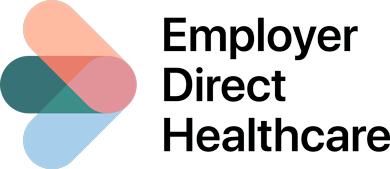Breakthrough innovations are driving unprecedented advancements in the healthcare industry, improving patient outcomes and enhancing the ways we prevent, diagnose and treat medical conditions.
The challenge is that while self-insured employers want to make sure employees can access the best care possible, “big-ticket items” can easily wipe out entire budgets.
To prepare for these changing dynamics, we asked some of the leading minds in healthcare and employee benefits about how employers can build a game plan to cover high-cost innovations appearing now and on the horizon.
“You need to plan ahead for how you’re going to cover these things,” advises Zeke Emanuel, MD, an oncologist, bioethicist and health policy leader.
Employers Need a Strategy to Cover GLP-1 Drugs
GLP-1 drugs, including Ozempic and Wegovy, continue to grow in popularity — and regularly receive celebrity endorsements — for their success in suppressing appetite and promoting rapid weight loss. While physicians have used these glucagon-like peptide drugs for over a decade to treat Type 2 diabetes, now they’re increasingly being prescribed as off-label weight-loss drugs.
And the more researchers discover about GLP-1s, the greater the implications beyond weight loss and diabetes management. The class of drugs can lessen the risk of heart disease and stroke, and also treat depression.
“I think we’ll also find a positive correlation to addiction treatment. Those that have used these drugs say their cravings are erased,” Dr. Emanuel says. “I predict [GLP-1 researcher] Jens Juul Holst will win the Nobel Prize this year.”
Dr. Emanuel touts myriad reasons to cover GLP-1s, but the high cost of the drugs means employers need to be smart about how they manage these programs. Even on the low end, monthly injections of Ozempic cost around $1,000.
“Many of the drugs [employer plans] already cover are more expensive and far less effective,” Dr. Emanuel says. “But you probably can’t cover every employee for GLP-1s, so you need to design a framework for how you decide who should be covered.”
For those you do cover, put a plan in place to eventually transition them off GLP-1s, and provide ongoing resources to help employees manage long-term behavioral changes. Without lifestyle changes, one study found participants regained two-thirds of the weight after stopping GLP-1 medication.
The goal is not for employees to perpetually take GLP-1s, but rather use them as the catalyst to lose weight and improve their health. Ongoing use without lifestyle changes proves costly and limits other employees from receiving coverage.
“You’re spending a lot of money to cover this drug — it’s not too much to ask to hold them accountable for these changes,” Dr. Emanuel says.
Milt Ezzard, Vice President of Global Benefits and Mobility for Activision Blizzard, launched a GLP-1 program for his staff in 2024. The video game juggernaut partnered with Twin Vision to triage and determine the appropriateness whenever an employee receives a GLP-1 prescription. If deemed appropriate, the employee must enroll in a Remote Patient Monitoring program (RPM) and wear a Continuous Glucose Monitor (CGM) to measure their insulin response to food intake and exercise.
“It’s fascinating,” says Ezzard, who tested the product last fall before rolling it out to his employees. “Bananas and pasta made my insulin levels spike, but beer had no impact. If I take a walk after dinner, my insulin levels immediately return to a normal range. It sounds obvious, but being intentional about the cause and effect of decisions I normally take for granted has been eye-opening.”
Emanuel noted that there are 73 GLP-1 drugs in the pipeline and negative side effects will continue to decrease with every new generation. “The volume of these drugs and their efficacy for treating multiple different conditions will put more and more pressure on employers to cover their cost,” says Dr. Emanuel. Ultimately, an effective GLP-1 framework ensures the employees who will most benefit from the medication receive coverage, helps employees make lasting lifestyle chances and reduces costs by transitioning employees off the medication over time.
Employers Embrace New Solutions for Cancer Care
Cancer now surpasses musculoskeletal conditions as the No. 1 driver of employer health spend. It’s problematic because few oncologists provide wraparound care to treat the whole person.
“Someone diagnosed with cancer cares about four things,” says Harlan Levine, MD, President of Health Innovation and Policy at City of Hope, a National Cancer Institute-designated comprehensive cancer center. “They care about survival, coordinated care, being treated with respect, and a return to full functionality.”
Despite these needs, newly diagnosed cancer patients often must navigate uncharted waters and make life-altering decisions with minimal guidance. If there’s a silver lining, it’s that employers are leading the way by adopting innovative solutions to improve cancer care.
For instance, the Cancer Care Direct program from Employer Direct Healthcare connects employees with end-to-end care navigation, second-opinion reviews of treatment options, and accelerated access to NCI-designated centers and local clinics.
“When we set out to design a better cancer program, the first thing we did was get as many smart people as possible in a room who were similarly unhappy with the current state of care,” says John Zutter, CEO of Employer Direct Healthcare.
One of those voices was Theresa Brown, an oncology nurse and cancer survivor.
“All I wanted after my diagnosis was for someone involved in treating my cancer to sit down with me, look me in the eye, explain my diagnosis, and clarify my likely course of treatment. That’s it. Simple. Easy. Yet, it never happened,” Brown says.
The Employer Direct model focuses on improving the experience by providing guidance, so employees feel confident they have the best possible team and the most appropriate treatment plan.
The Cancer Care direct team engages patients very early in the process to validate the diagnosis and ensure the treatment plan follows the latest standard-of-care guidelines.
“We heard from cancer patients who said they were scared to get a second opinion for fear of insulting their oncologist,” says Nicki MacManus, General Manager of Cancer Care Direct for Employer Direct Healthcare. “Our integration with AccessHope provides a peer-to-peer review service, and 88% of diagnosing physicians take their advice.”
Zutter emphasizes the goal of Cancer Care Direct is not to disintermediate care. “We want to empower the patient and the specialist with better guidance,” he says.
MacManus and her team also tackled the cost of cancer drugs, as patients are often forced to worry more about the price of drugs than the quality of the treatment.
“To drive real savings in cancer, you have to impact the drugs,” she says.
One of the biggest flaws in the current system is the fact that oncologists are incentivized to use the most expensive drug, not the most effective one, because they make 6% revenue share on the drug cost. Employers need to have the leverage and pricing sophistication to require oncologists to choose the most effective medicine. For example, a 6% commission on a $10,000 drug is $600, but only $60 for the $1,000 drug. By paying the oncologist $600 for the less expensive medication, the employer still saves $9,400, notes Dr. Emanuel.
Employers Plan for CAR T-Cell and Gene Therapy
Oncologists are turning to groundbreaking remedies to combat cancer, including gene therapy and chimeric antigen receptor (CAR) T-cell therapy. These cutting-edge treatments harness the power of the body’s immune system and genetic manipulation to target and eliminate cancer cells.
Gene therapy uses genetic material to prevent and treat disease, rather than typical methods like chemotherapy or surgery. Oncologists insert a healthy copy of a gene into cancer cells to either inhibit their growth or cause their destruction. Gene therapy proves effective in treating cystic fibrosis, lung disease, hemophilia, beta thalassemia, HIV, and sickle cell disease.
With CAR T-cell therapy, oncologists alter the genes in a patient’s T cells in order to attack cancer. The process involves removing T cells from a patient’s blood, altering them in a laboratory by binding them with a specific cancer cell antigen and reinserting them into the body. CAR T-cell therapies are approved by the FDA to treat several blood cancers, including lymphomas, leukemia, and multiple myeloma.
These treatments prove highly effective—especially when other treatments are unsuccessful for some cancers—and researchers continue to study its efficacy on other cancers. However, the exorbitant costs put employer health plans at risk, and potentially limit patients from receiving life-saving treatments.
According to an analysis by Marsh McLennan Agency, nearly 100,000 patients in the U.S. will be eligible for cell and gene therapy by 2025, at a total cost of $25 billion. Typical gene therapies can range $65,000 to $475,000, while a single course of CAR T-cell therapy can cost over a million dollars.
“Cell & gene therapy is no longer a theoretical debate, and the cost of these therapies will make specialty drugs look like a drop in the bucket. It might affect 10 people in your population. But at $3 million per person, it’ll break the bank,” warns Dr. Emanuel, who believes these therapies will really start to impact employers in the next five years.
As gene and CAR T-cell therapy become more commonplace, employers must build a strategy to manage the associated costs, including:
- Evaluate risks and costs: Understand the costs of current and emerging therapies, employee population demographics and associated risks, and the insurance regulatory framework.
- Leverage risk-sharing and reinsurance: Work with reinsurance providers that specifically cover procedures related to gene therapy and T-cell. Risk-sharing agreements with cancer centers, oncologists and pharmaceutical companies can also help to manage costs.
- Regularly analyze and update plans: Review health plans annually and make regular updates to cover the latest therapies.
Finally, employers also need to ensure their populations can access world-class providers who not only keep up with the latest innovations, but provide the most effective treatment plan.
Planning for the Future
Employers must prepare now for the influx of new procedures, drugs, and employee benefits brought about by rapid innovation. Taking a proactive approach ensures employees have access to the latest services and premier treatment centers, while keeping costs under control whenever possible.



